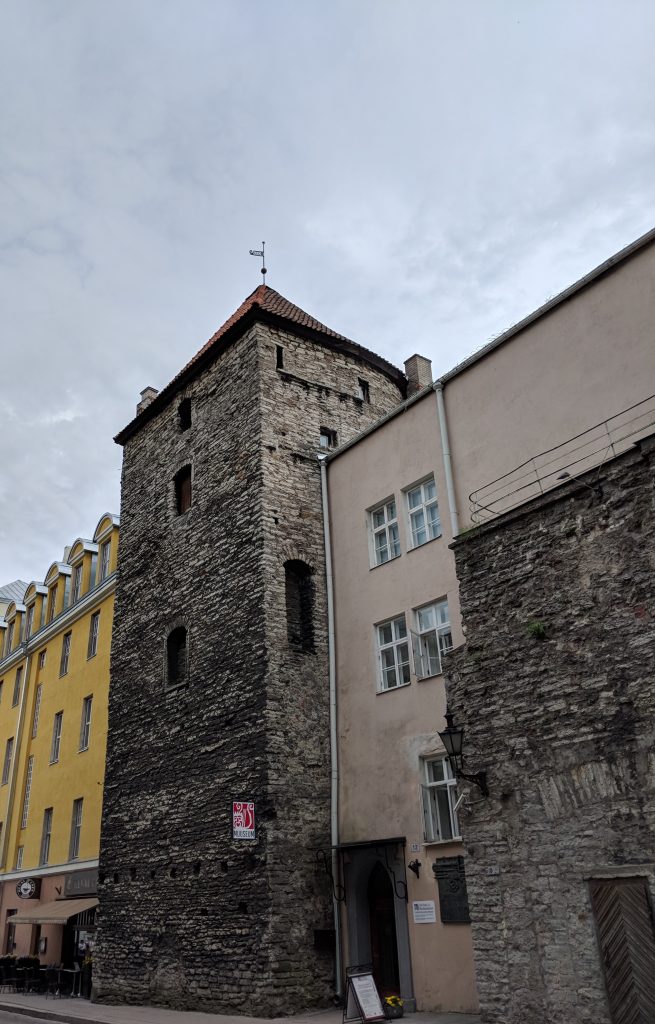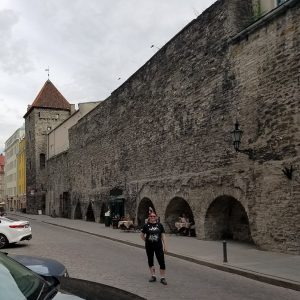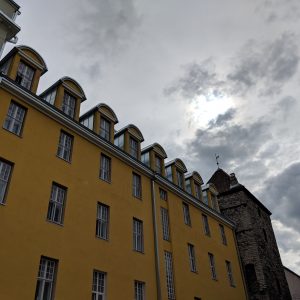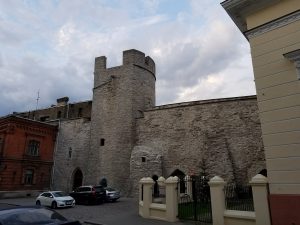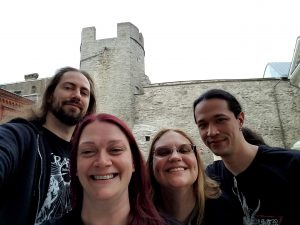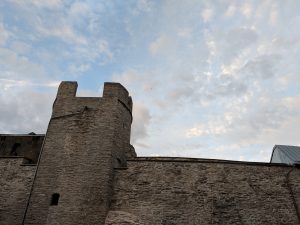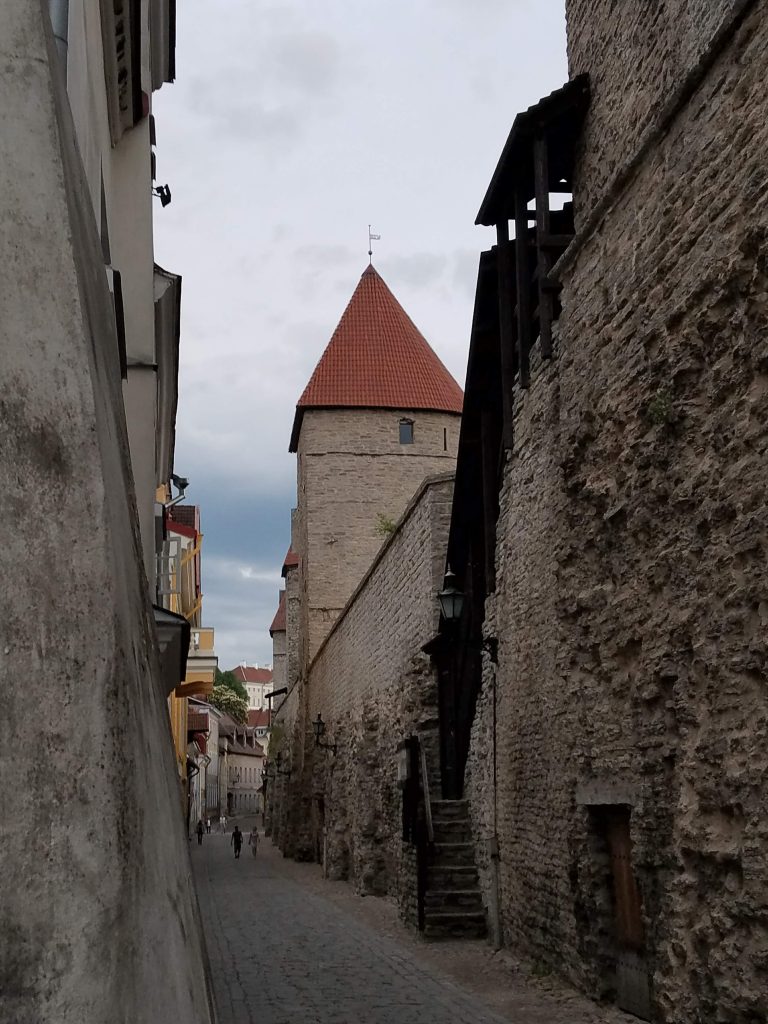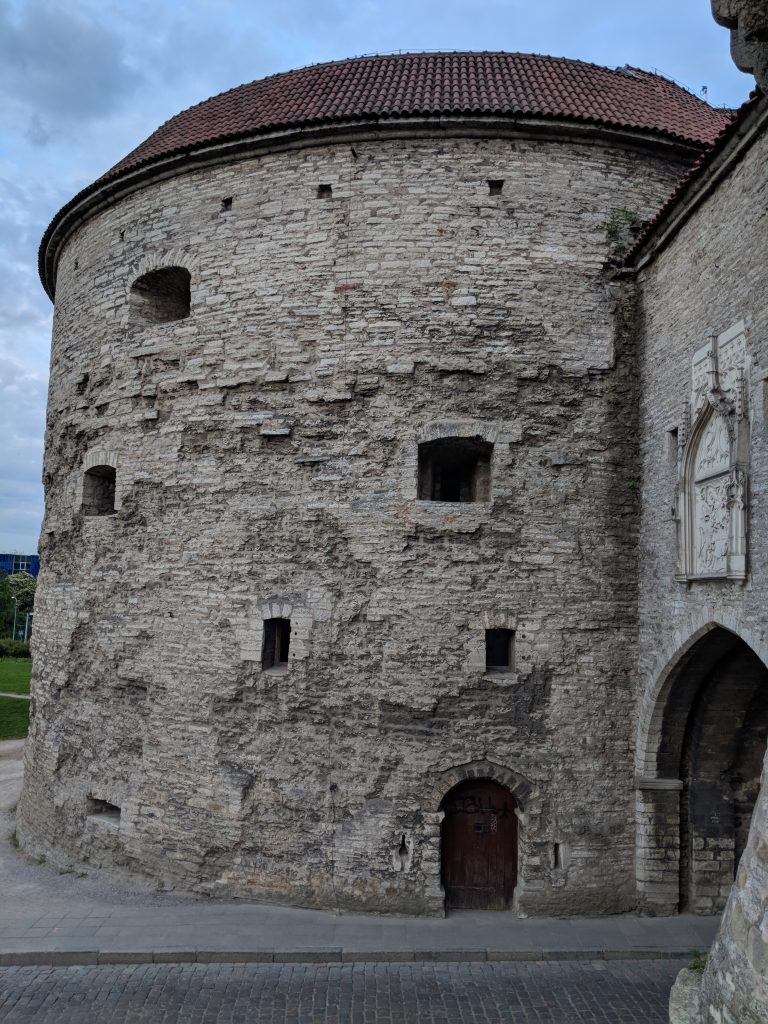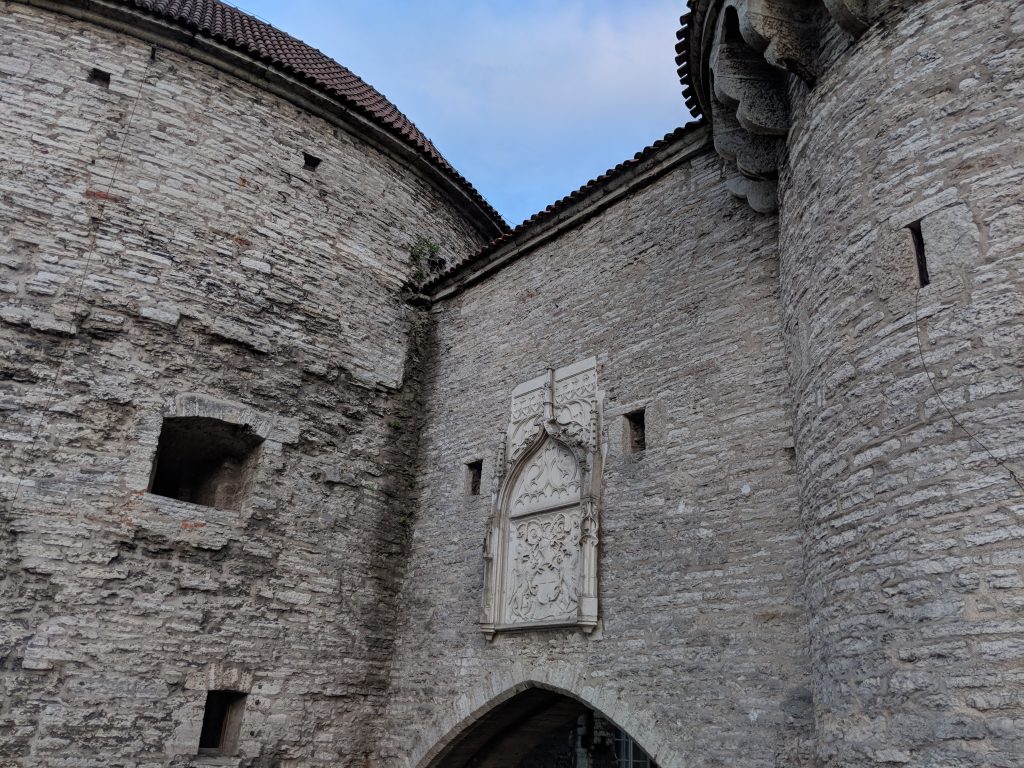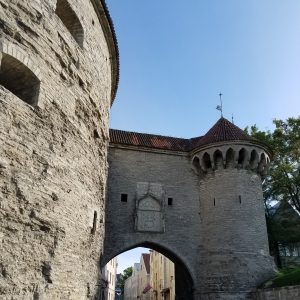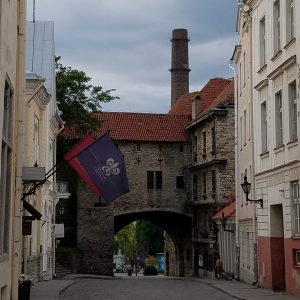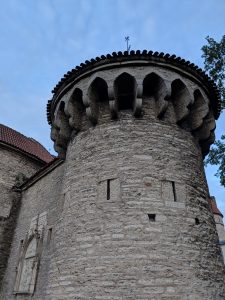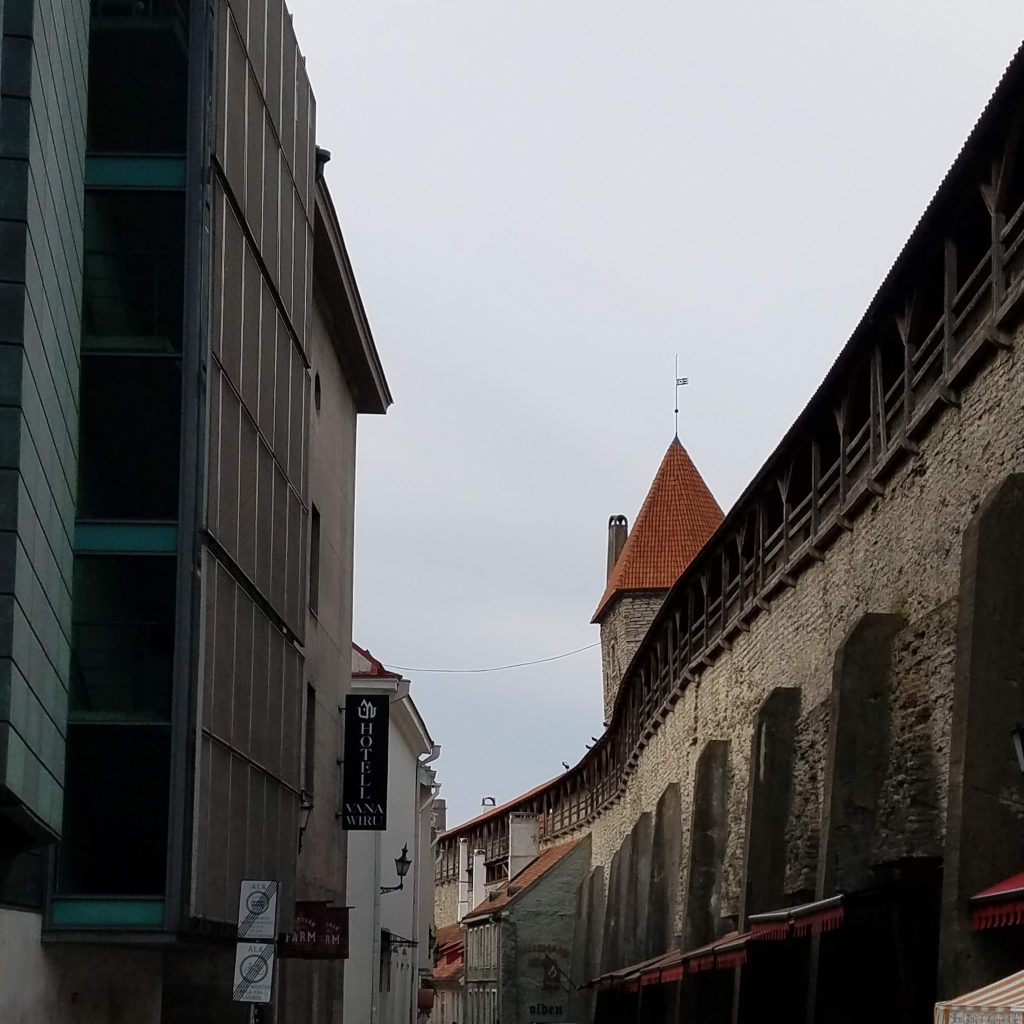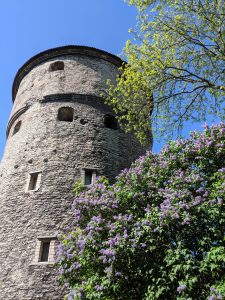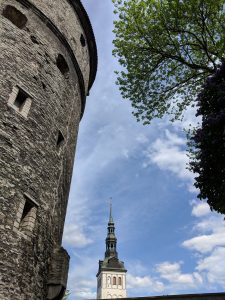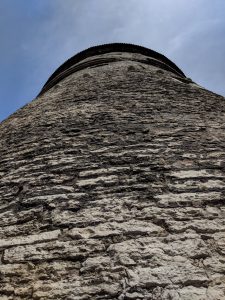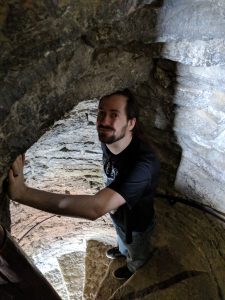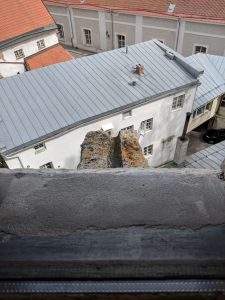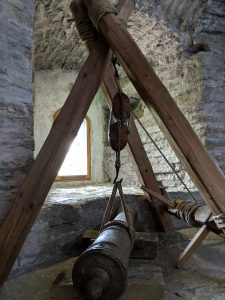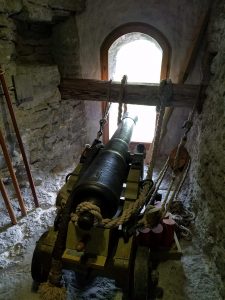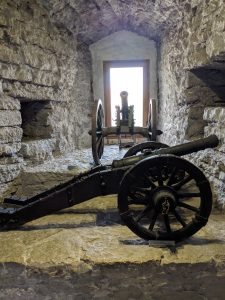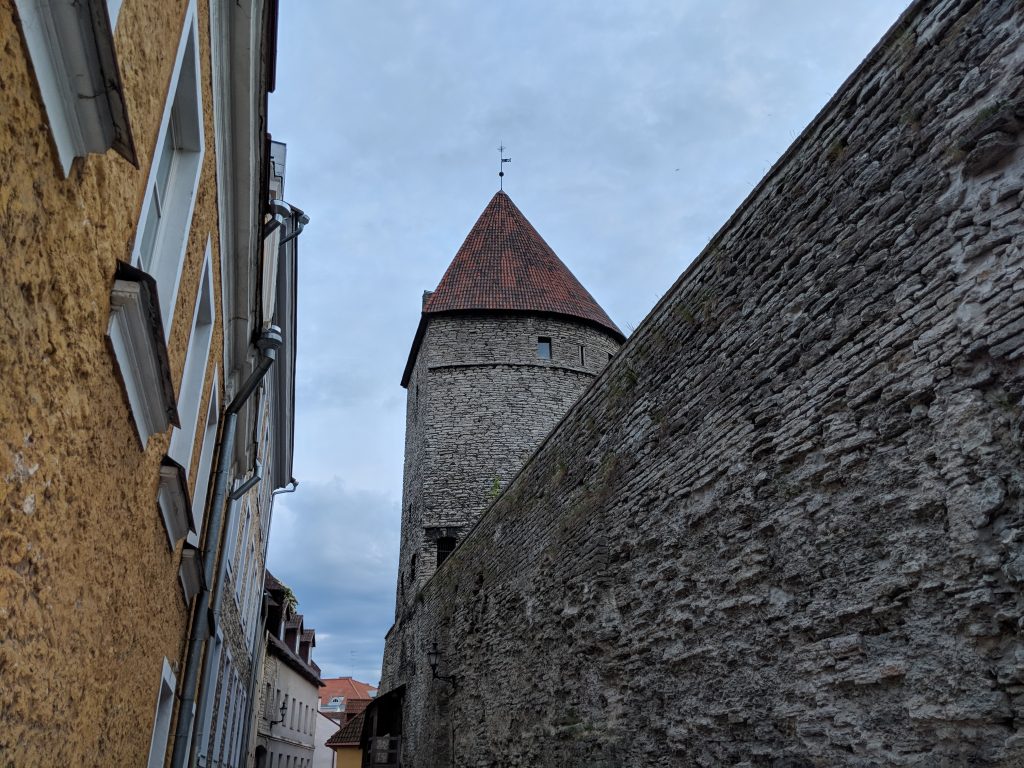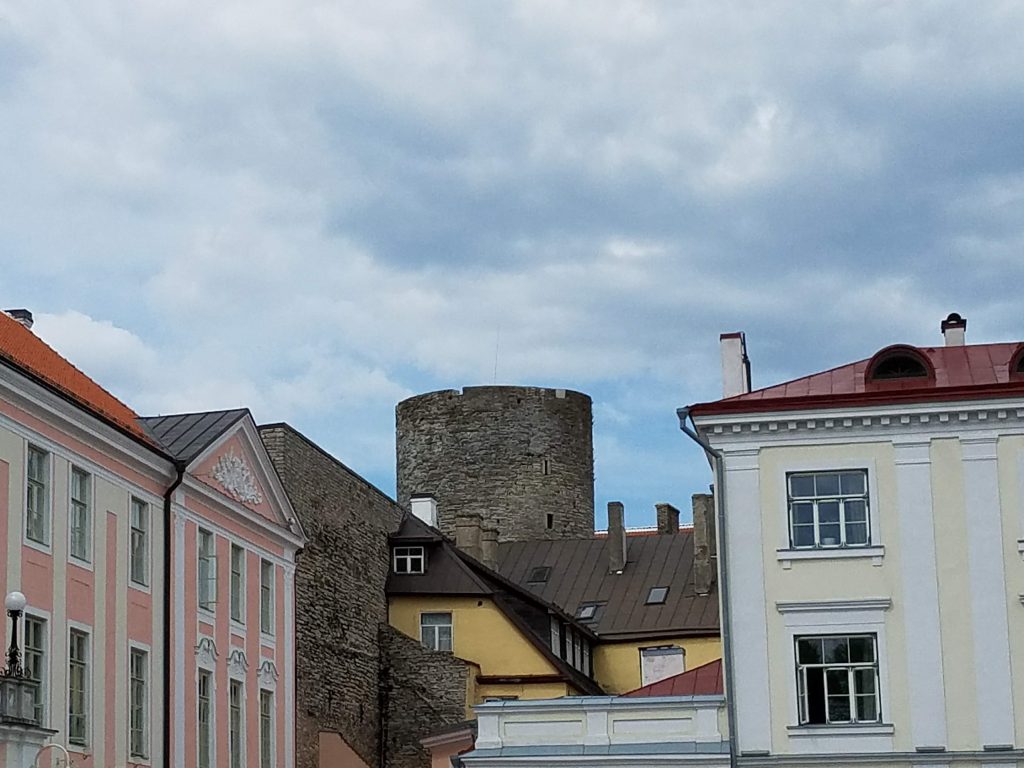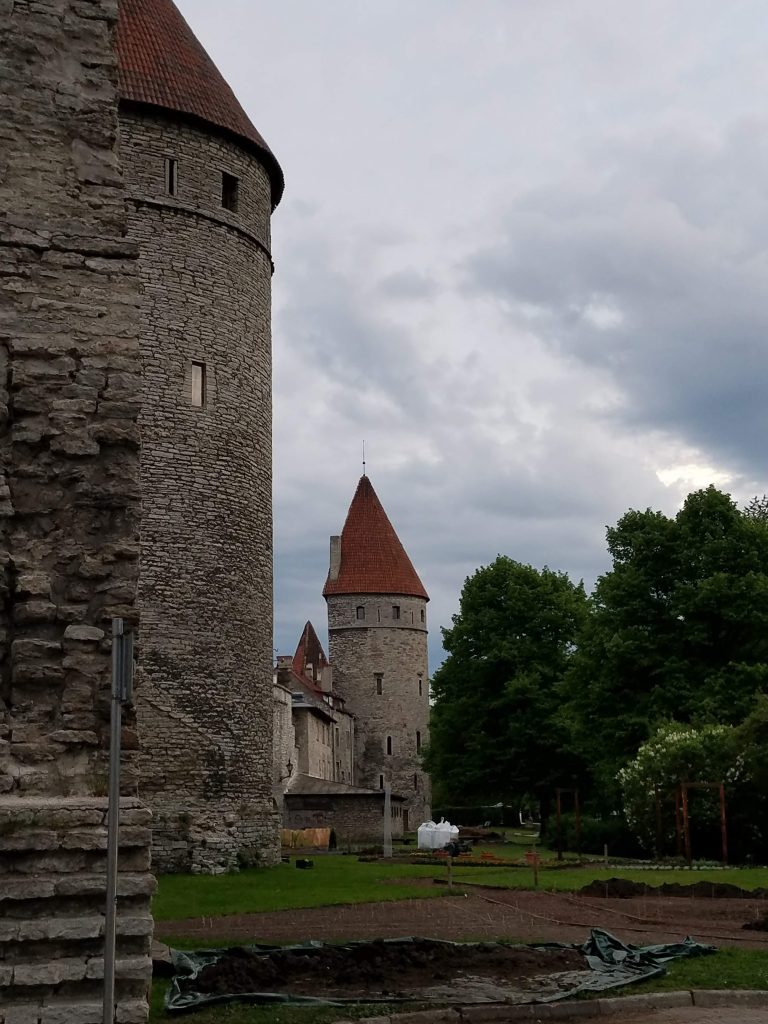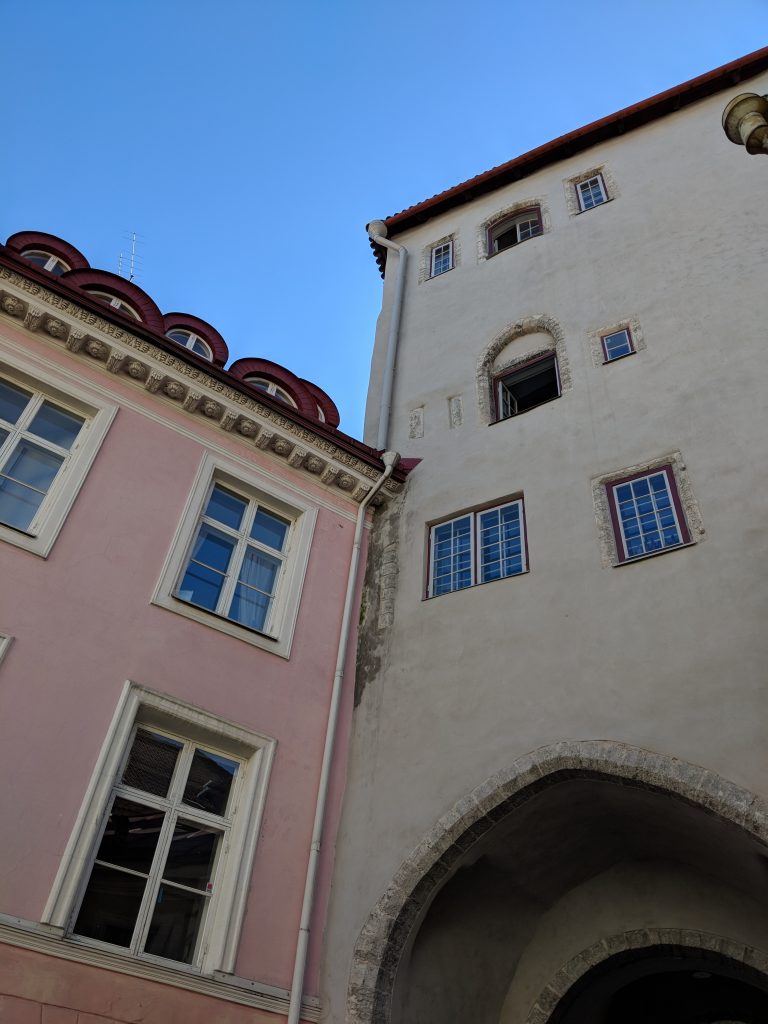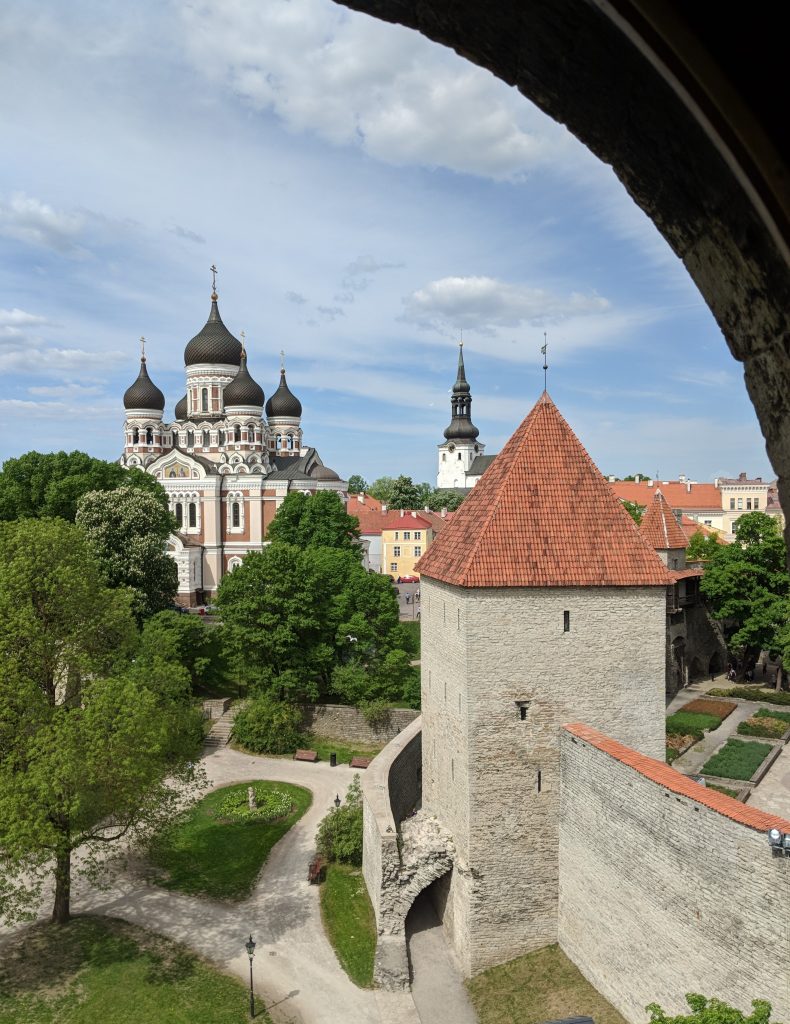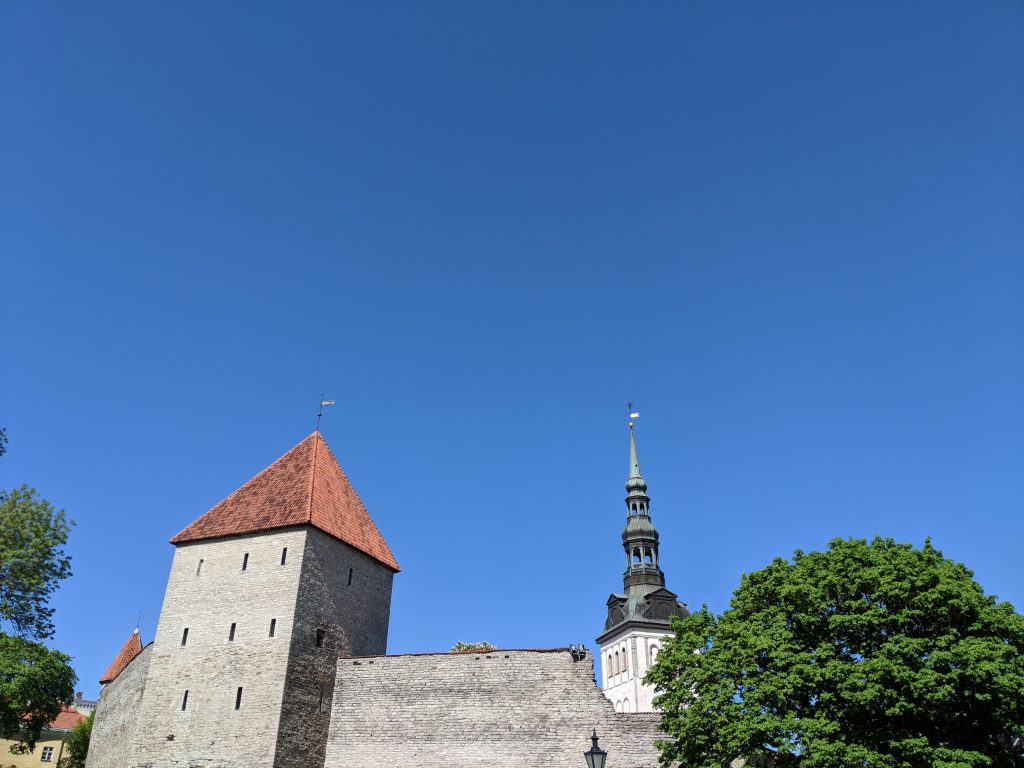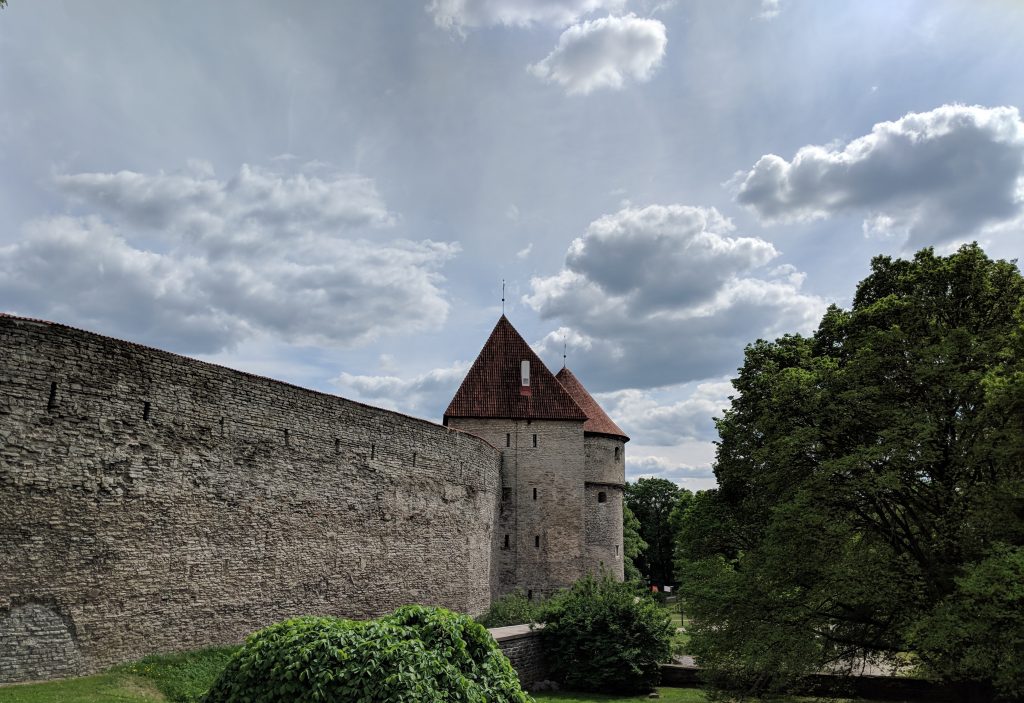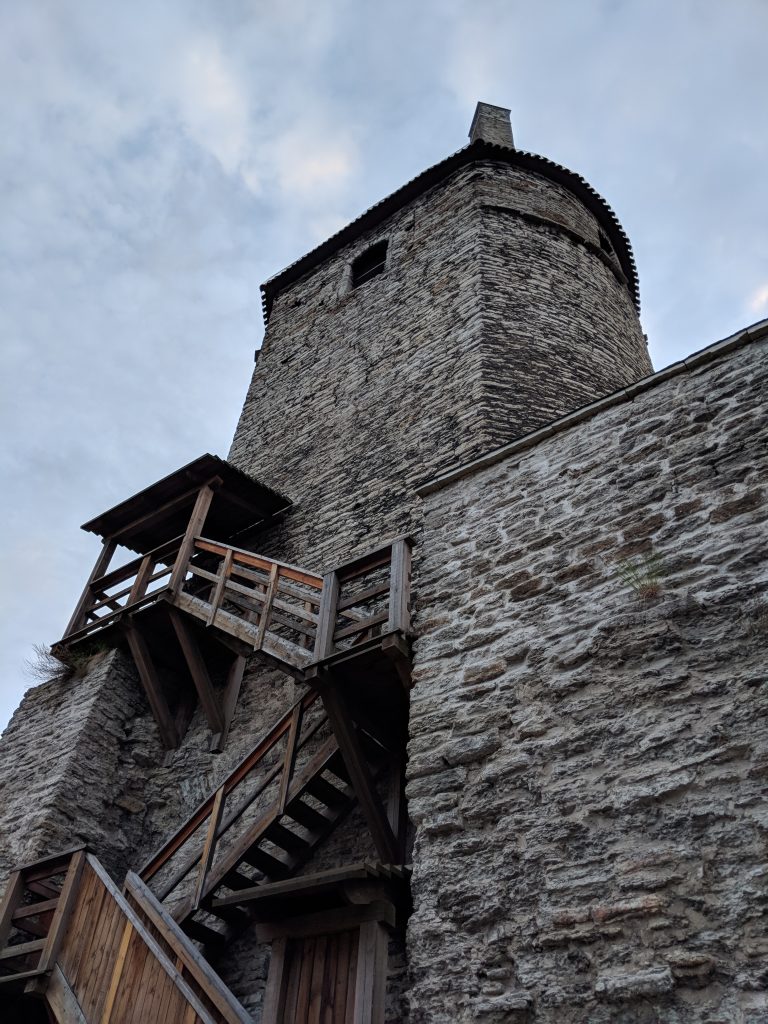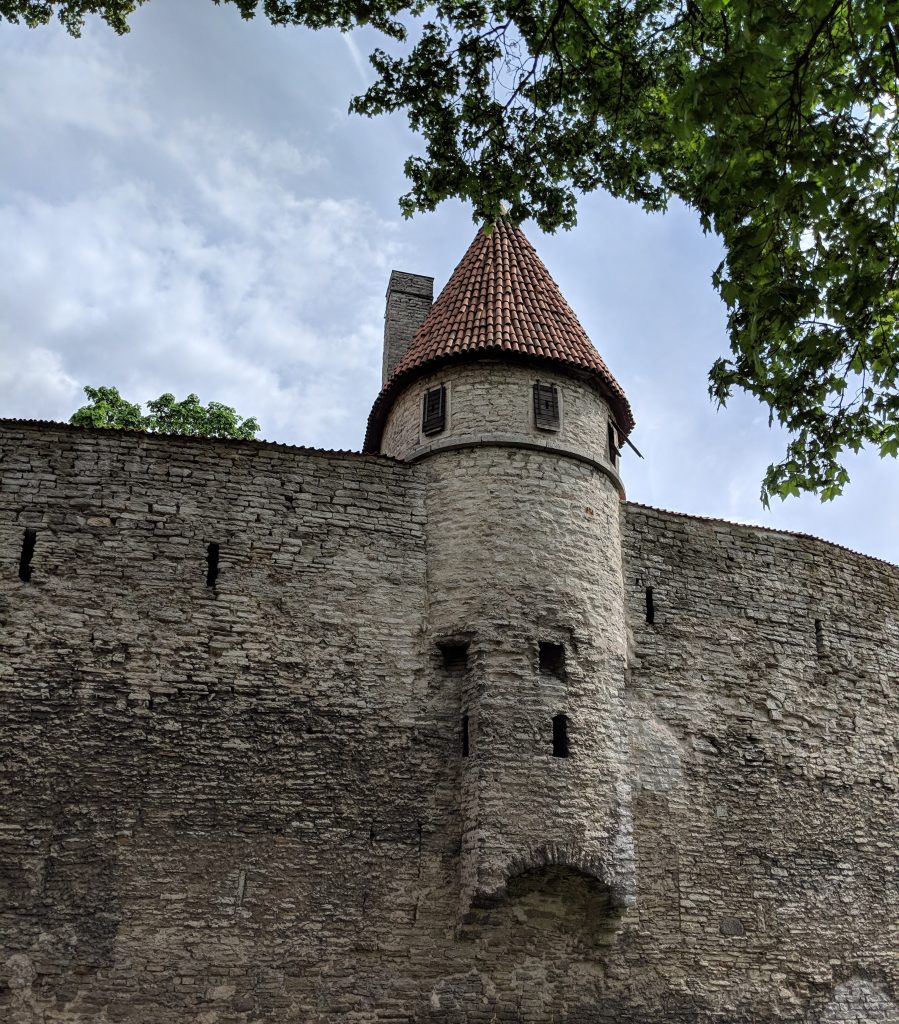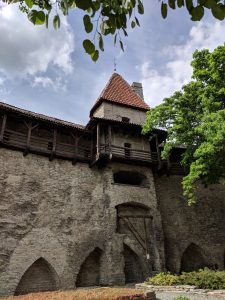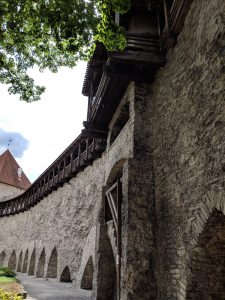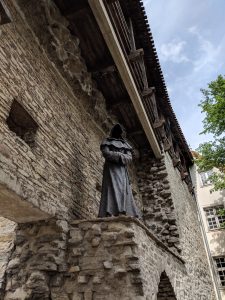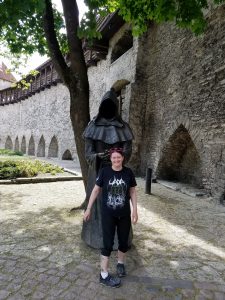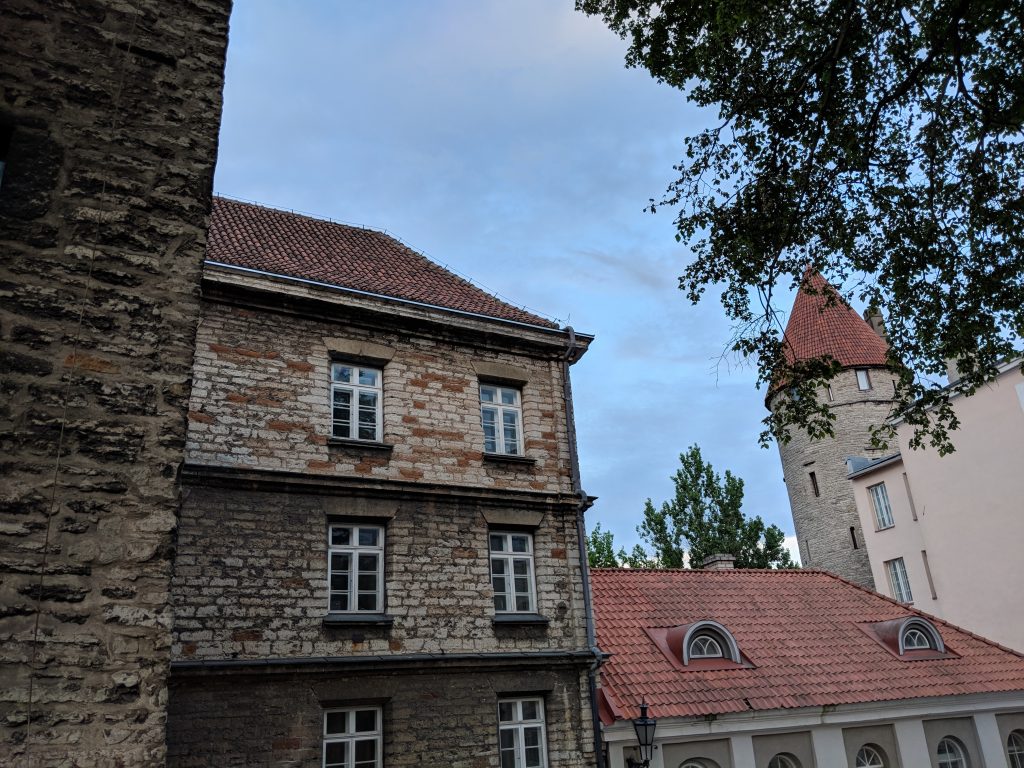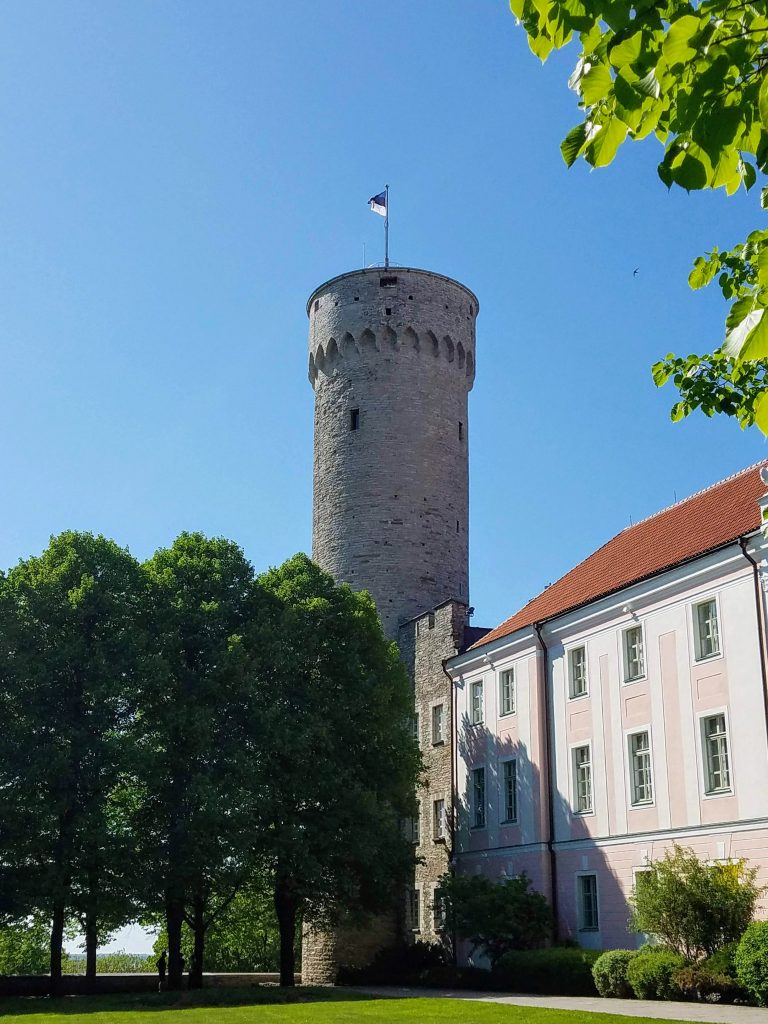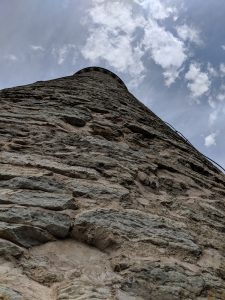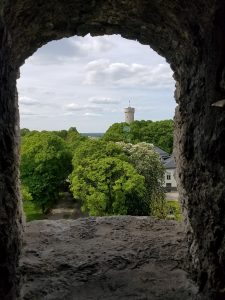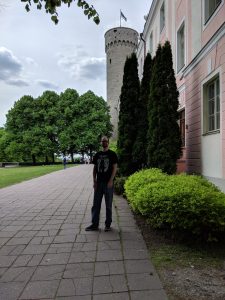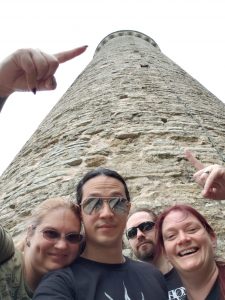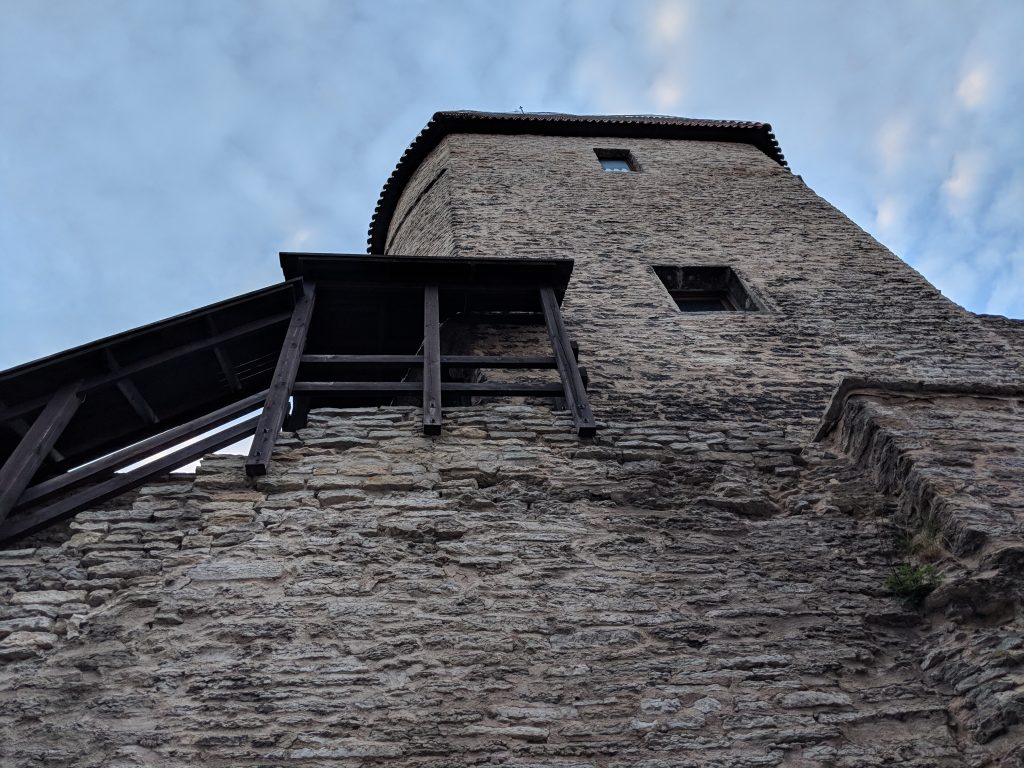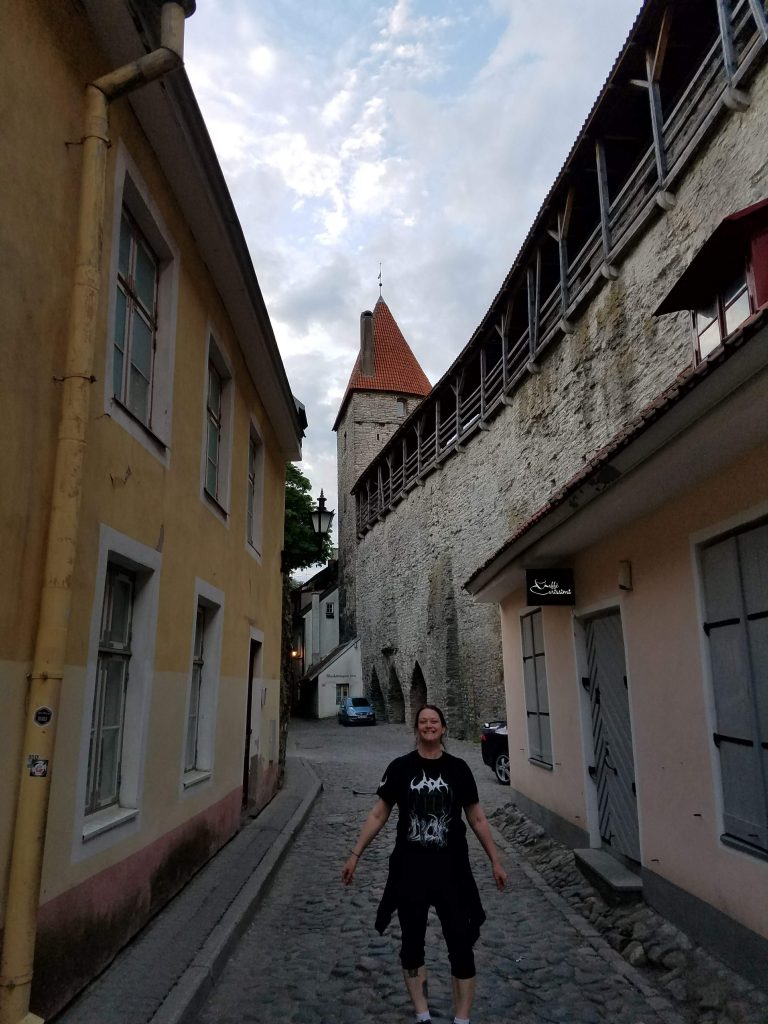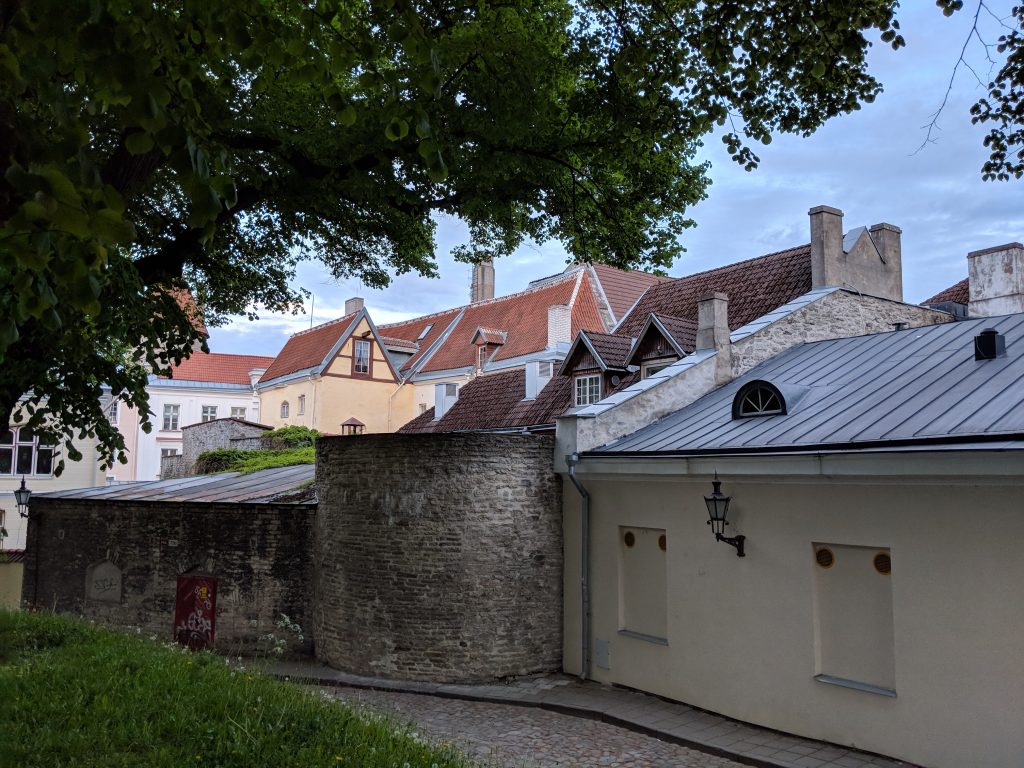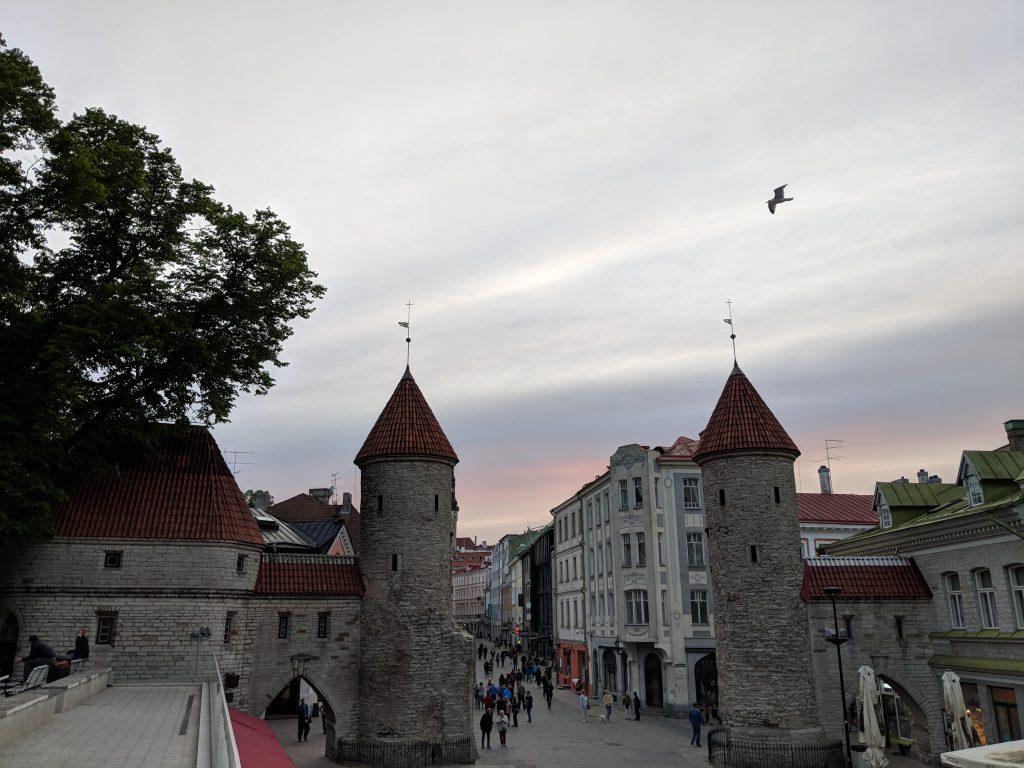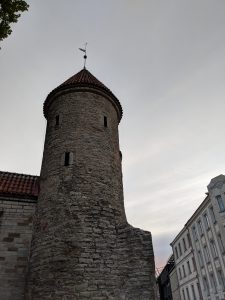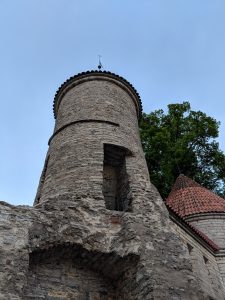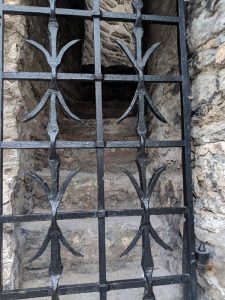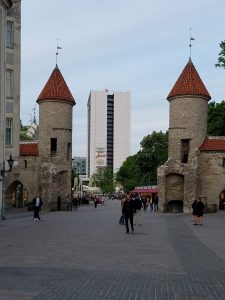Tallinn’s Medieval Towers, Oh My…
Contagious, enthusiastic hope for the future with an undeniable melancholy, persisting from the past.
Old Town, Tallinn
The most enchanting town, I never knew, I wanted to see so badly!
I wish I’d had more time.
Time is a funny thing.
It was almost as if we couldn’t run out of time, an illusion brought on by late sunsets and early sunrises.
It’s not easy to describe the energy of Tallinn’s Old Town. It’s palpable.
Enigmatic
Romantic
Tragic.
Walking along the narrow, cobbled streets the word “fairytale” easily comes to mind.
We saw so many amazing things in Tallinn that I get distracted. Distracted by wanting to share the whole story from food, to views, to experiences, and learning Estonian history.
Seeking Out Tallinn’s Towers
May 20, 2018. We traveled across the Gulf of Finland on a ferry from Helsinki, Finland to Tallinn, Estonia.
Upon arriving in Tallinn, we saw the impressive Great Coastal Gate and Fat Margaret.
We were staying in Old Town, and after seeing these iconic landmarks my excitability level was high.
Later that night, we visited Viru Gate and got a glimpse of Hellemann Tower.
2 towers, 2 city gates.
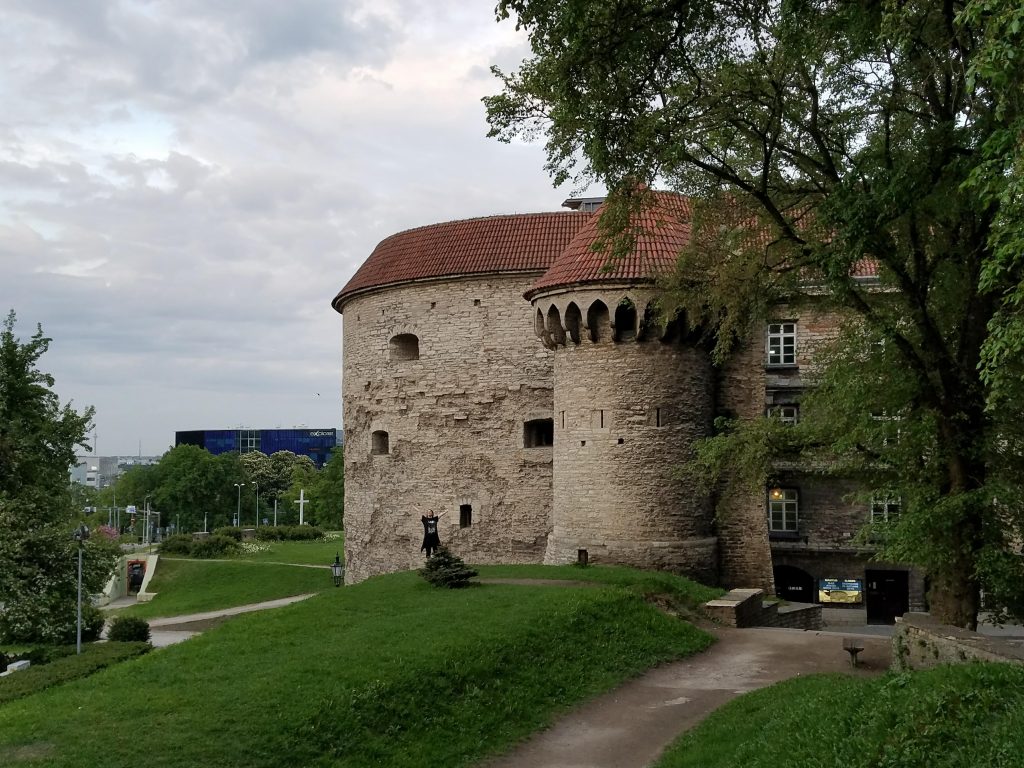
May 21st. It was our first full day in Tallinn and we did a walking tour. We met our guide outside of the Tallinn Tourist Information Centre.
During our walking tour we saw Kiek in de Kök & the Maiden’s Tower for the first time.
As we continued the tour, at Toompea Castle, we saw Tall Hermann & Landskrone Tower.
Then our tour guide led us to the Patkuli Viewing Platform, where we were able to see nine towers along the western city wall.
Before we ended our tour at Town Square, we stopped for a minute by the Long Leg Gate Tower.
And I shouldn’t forget Harju Gate, which is unique because its ruins are all below ground, exhibited near Freedom Square.
3 city gates, 1 town gate, and 15 towers.
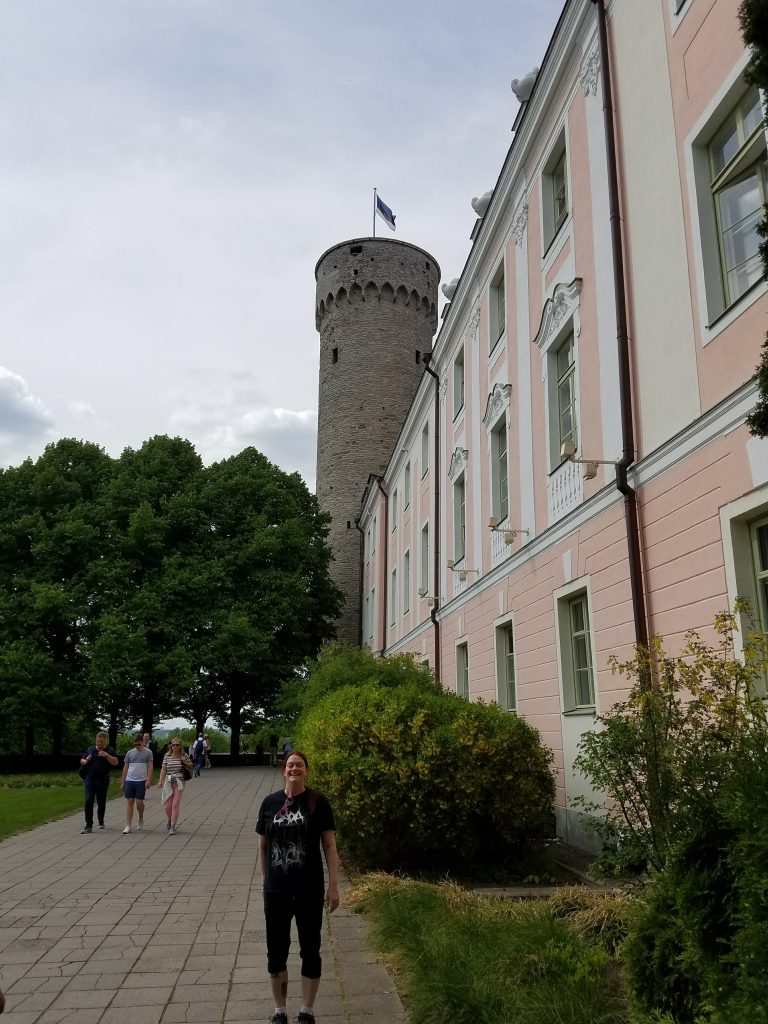
Still Searching for Towers!
May 22nd. On our final day in Tallinn, we decided to visit the Kiek in de Kök Museum and tour the Bastion Tunnels.
That afternoon we also saw the Maiden’s Tower, Stable Tower, Tall Hermann, Landskrone Tower & Assauwe Tower.
In the evening, we took a stroll through St. Catherine’s Passage where we saw Tower behind Monks and the Hellemann Town Wall Walkway.
Continuing our evening walk around town we saw Bremen Tower, the Great Coastal Gate, and I was thrilled to be able to see Fat Margaret again!
By revisiting Fat Margaret, we also got to see the remnants of the Tower behind Wulfard’s as well as Stolting Tower.
As we were walking, determining what to do next, I got a peek of the western city wall!
I skipped excitedly over to the tangible passage of time and ran my hand over its story.
A faint whisper from the past screamed legends from the enduring stones within the wall.
Wait. Was that a tower?
Looking down the road I saw tower, after tower, after tower.
After tower.
Tower behind Grusbeke’s
Epping Tower
Plate Tower
Köismäe Tower
Loewenschede Tower
And so on…
11 more towers? Total of 26 towers? 24 towers if you don’t count the 2 castle towers… but why wouldn’t you include castle towers in an Old Town tower list?
It gets confusing.
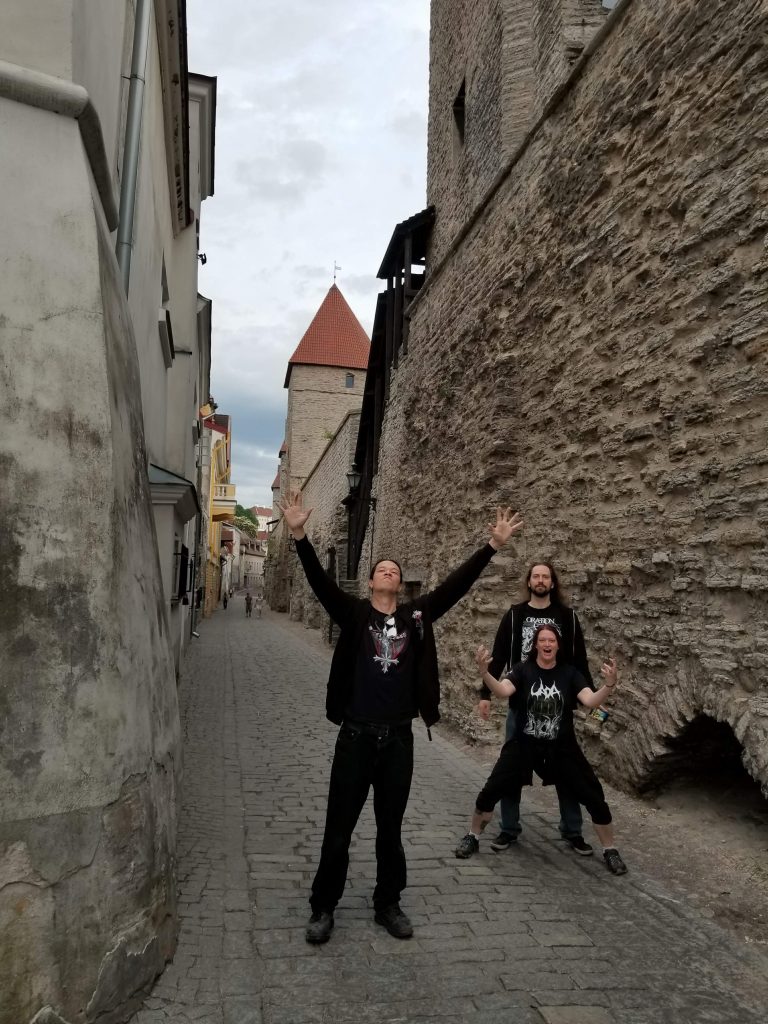
Towers of Tallinn, Old Town
Once upon a time, Tallinn’s Old Town had 46 defense towers and approximately 4 kilometers of walls surrounding the medieval city.
Today, 26 towers and about 2 kilometers of walls remain making Tallinn’s Old Town one of the best preserved medieval cities in Northern Europe.
Medieval Fortresses
It’s an obsession really.
I have spent days combing through photos and researching Tallinn’s Old Town city walls.
Counting towers
Discovering tower names
Studying maps and tower locations
Seeing for the first time, towers in photos that I didn’t see up close while walking about the city
Counting Towers…
Trying to name all the towers.
It really is confusing.
While we were observing Old Town’s city wall, I remember boasting that I was going to find out all the names of the towers…
After studying a photo I took of an Interpretive Sign within the Kiek in de Kök Museum, I was able to make a comprehensive, alphabetical list of medieval towers my friends and I saw during our time in Estonia.
Old Town’s Medieval Towers
1. Assauwe Tower
2. Bremen Tower
3. Epping Tower
4. Fat Margaret
5. Great Coastal Gate
“The Great Coastal Gate, along with the Viru Gates, are the last of six gates that controlled access to the town in medieval times.” Visit Tallinn
6. Harju Gate
“It has not been established exactly as to when this gate was built, although mention of it was first made in 1355.
In the middle of the 16th century, the city’s south-side fortifications were modernized and the Harju Gate was closed. It was re-opened in 1767; however, in 1875 its main tower was demolished.
During the renovation of the Freedom Square in 2009, the underground structures of one of the Harju Gate towers were put on display while the locations of the towers of the gate complex were marked on the pavement.” Interpretive Sign
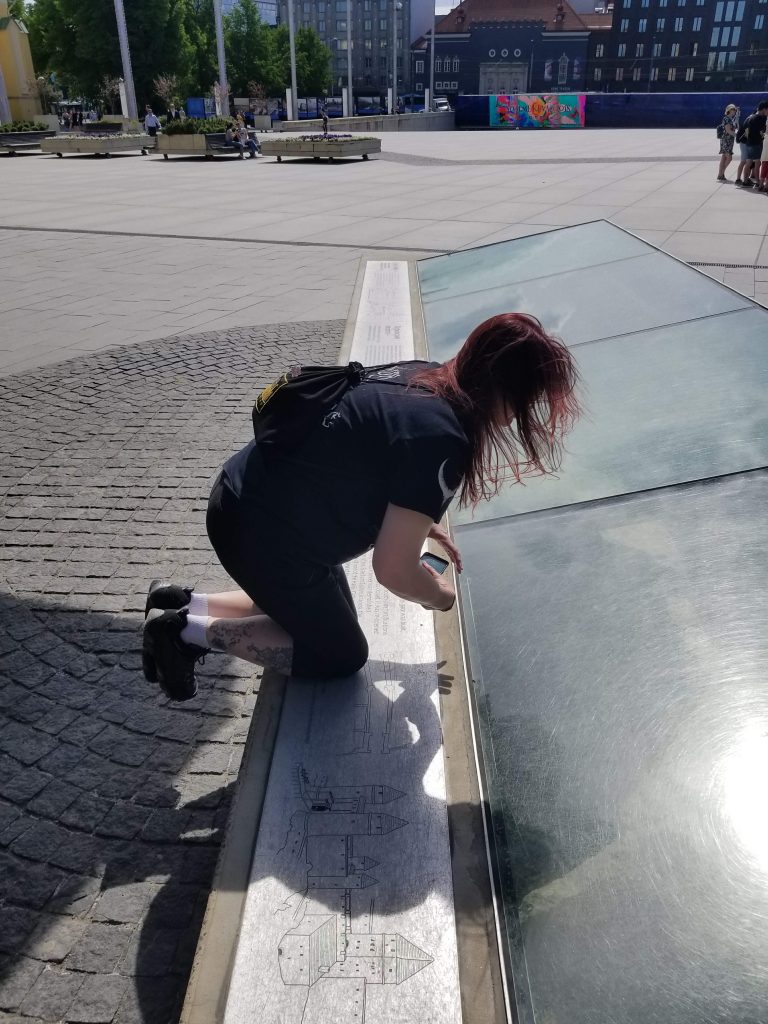
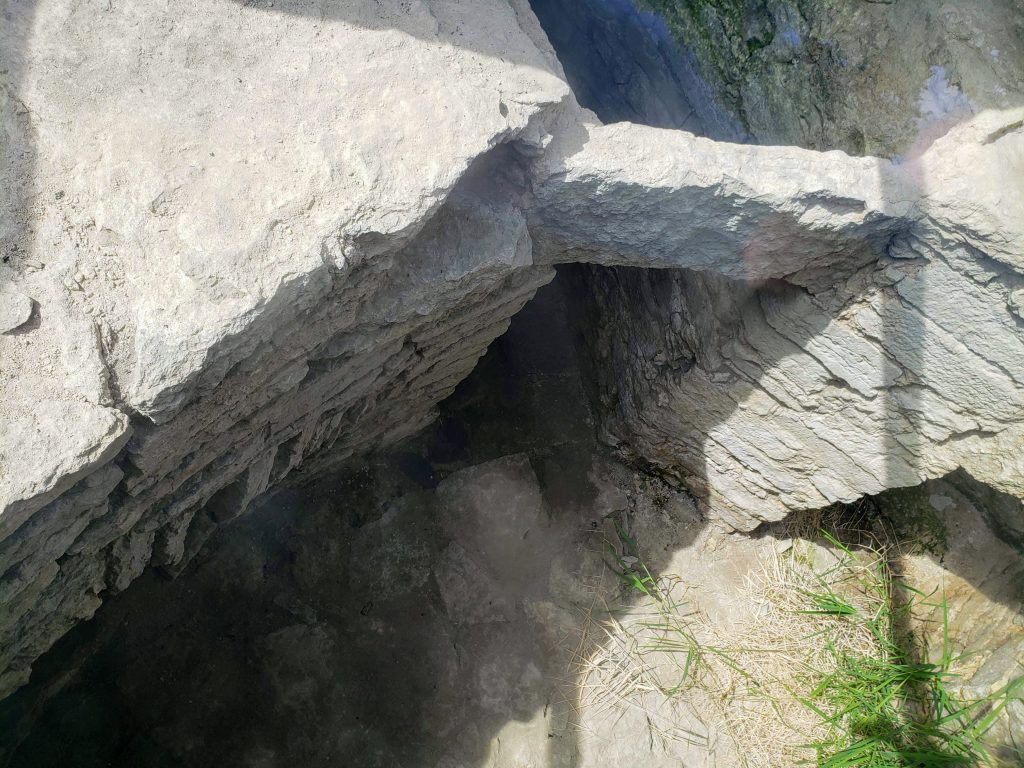
7. Hellemann Tower and Town Wall Walkway
8. Kiek in de Kök Museum
“Kiek in de Kök, the mightiest bastion tower in Tallinn, was initially built in 1475-1483. The tower was first recorded in the Tallinn Town Council Registers as “the new tower behind Boleman’s bath.” By 1577 the name Kyck in de Kaeken had appeared and further on it was called Kik (kyk) in de Kok, Kiek in die Küche, Kickenbeck, Pluffer-Thurm Giecken Köck. The present name, dating from 1696 means “peep (or peek) into the kitchen” in Low German. And indeed, the 38-metre high tower allowed those on top of it to peek through the wide tapering mantled chimneys into the near-by kitchens of the lower town, but, on the other hand, also into the ‘kitchens’ of the besieging enemy, i.e. into the enemy’s base.
The present tower contains several stages of construction. In 1483 the round Kiek in de Kök was 33.2 metres high, 17.3 m in average diameter, with walls up to 4 m thick. The present height, together with the roof that was built later, is 49.4 m.
The shooting capacity of the tower was very high indeed, especially when compared to the other Tallinn towers. In addition to the open throwing platform there were at least 27 embrasures for cannons and 30 loopholes for small arms. The basement floor accommodated the arsenal, all the other five were for defence.
Reconstructions in the 16th and 17th century changed the countenance of the tower considerably. In 1532 the construction of a fortification called the High Barbican (Hoge Rundel) was launched. It was before the Livonian War when the parapet was made higher and a roof was built to shelter it.” Interpretive Sign within the Museum
9. Köismäe Tower
10. Landskrone Tower
11. Loewenschede Tower
12. Long Leg Gate Tower
13. Maiden’s Tower
“The first mention of the Maiden Tower (Estonian Neitsitorn) dates back to 1373. This is the only surviving defence tower in Tallinn’s medieval town wall with a rectangular floor plan and an open town side. The Low German term for it was Meg(h)ede torne. It is assumed that the tower was named after a Tallinn citizen Hinse Meghe or derived from the Estonian-language phrase Mägede torn (Tower of Hills) as the tower is situated high up on a hill distinctly visible from the Lower Town. In the 19th century the German name evolved into Mägdeturm or Mädchenthurm, developing an association with a servant girl or a maiden. The Estonian name Neitsitorn is an approximate translation.” Interpretive Sign
14. Plate Tower
15. Stable Tower & Town Wall Walkway
16. Stolting Tower
17. Tall Hermann
18. Tower behind Grusbeke
19. Tower behind Monks
20. Tower behind Wulfard’s
I had such a difficult time naming this particular tower remnant, that I still have my doubts about calling it Tower behind Wulfard’s.
21. Viru Gate
“Viru Gate (Estonian Viru vārav, German Lehmpforte “clay gate”; first mentioned by name in 1362) and the street linking it to the lower town marketplace received their German names due to their proximity to clay pits located nearby. It was here, from the gate located at the end of one of the main streets for commerce in Tallinn, where the roads leading to Tartu and Narva began. Only two corner towers of the barbican now remain, with the ground plan of the medieval parts of the gate marked on the pavement.” Interpretive Sign
Tallinn Town Wall from Patkuli Viewing Platform
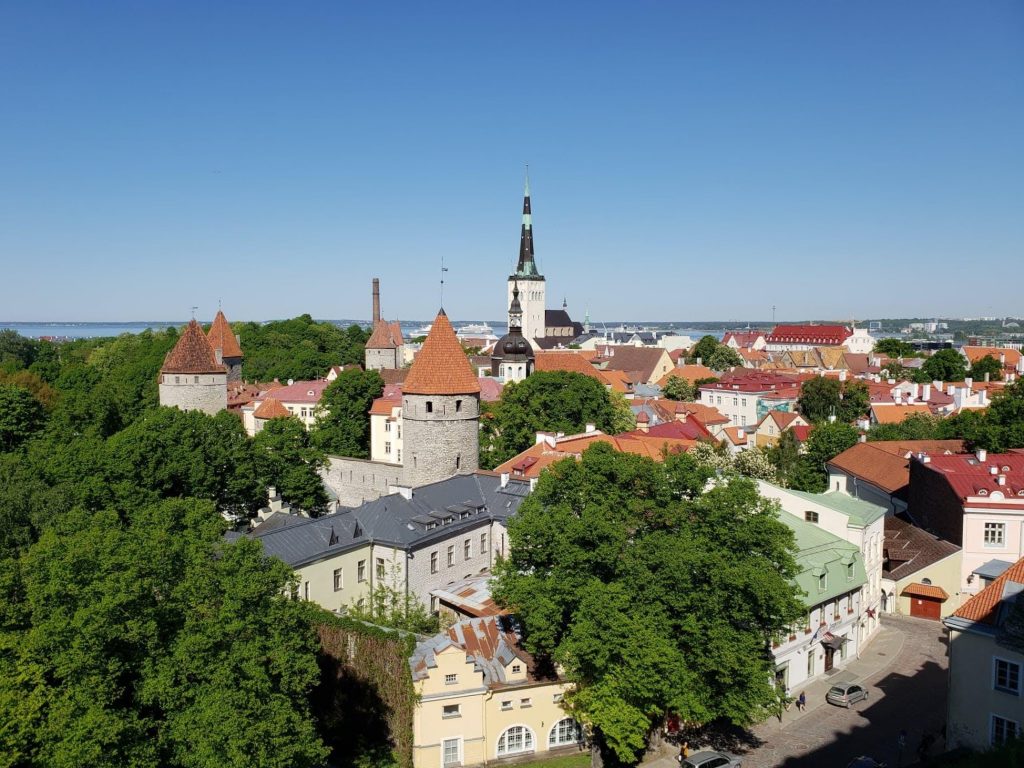
“We” are Alicen (me) & Nathan, Becky & Andrew, and Megan & just a few of the photos we took in Tallinn, Estonia are shared here (I seriously have hundreds of photos).
